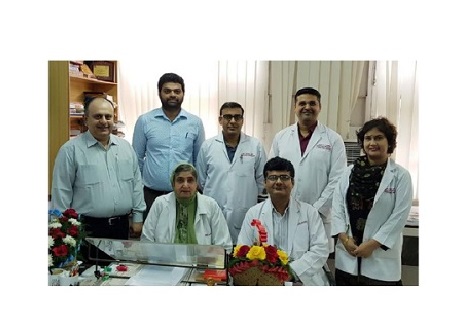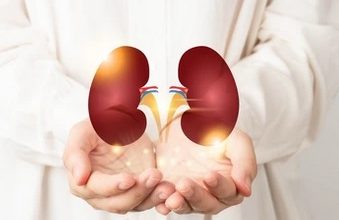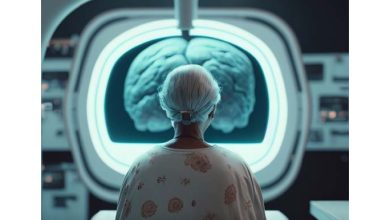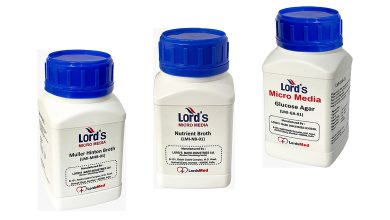The Assiduous Guru: Dr Ratti Ram Sharma

Dr R R Sharma talks to IMT about his inspirational journey from his school days to becoming Professor & Head, Department of Transfusion Medicine, PGIMER, Chandigarh
When it comes to leader in transfusion medicine Dr Ratti Ram Sharma ‘s name shines bright. His biggest trait is that he is humble and not afraid to reach out to colleagues and juniors. He comes from a humble background and succeeded to move up, on account of his own effort, in medicine. He spoke to IMT and narrated his journey that led him through marvelous technologies and opportunities in Transfusion Medicine.
Dr Ratti Ram Sharma was born in the year 1968 on September 27, in a small village in Himachal Pradesh in Shimla district. His father worked in a government printing press in Chandigarh and his mother was a homemaker. His elder brother served in the Indian Air Force for 35 years. The primary education of Dr Sharma was in the village and followed by a Government Model School in Chandigarh. Since he was good at studies, he bagged some awards from the UT administration.
Dr Sharma got admitted to Government Medical College Shimla in 1987 by securing the third rank in the state
entrance test. He completed his post graduation in MD pathology from PGIMER, Chandigarh in 1997. In January 1998 he was in transfusion services, first as a senior resident and then joined as a faculty in September 2001.
Dr Sharma married Renuka in 1998, who is a doctor and is serving in a medical college in Himachal Pradesh as a Professor of General Surgery. He has one daughter and she is currently pursuing her career in Medicine at
GMCH Chandigarh. Says Dr Sharma, “I was always fascinated by the young doctor whenever I used to visit the hospital with my parents to see someone admitted or get treatment myself when sick. My MBBS teachers especially, Prof Gupta in anatomy, have left an impression in my mind with his thorough knowledge and clarity of
human anatomy, which I can recollect even now. After joining transfusion services in PGI, Chandigarh, all three
previous HODs Dr JG Jolly, Dr SK Agnihotri and Dr Neelam Marwaha have left a remarkable impression of their
commitment and involvement in the speciality to upgrade the standard of transfusion services in the country.”
During difficult times, Dr Sharma always looked upon his parents and took inspiration from the hardship they have gone through in their life. He opines, “The only answer for any challenge in life is to always be optimistic and face it with all your capacity and I always believe that if our aim is good and we put in sincere efforts, God certainly helps us out through the difficult times.” Dr Sharma has been awarded HD Shourie [2008)and JR Jolly awards (2014) of ISBTI for innovation and research in transfusion medicine. He was also awarded ICMR long-term fellowship in 2012 and worked in the Department of Laboratory and Transfusion Medicine at the University of Minnesota with Prof David Mckenna where he receiveda certificate of distinction from the university for teaching, training and research activities. He was the visiting Prof at the Department of Transfusion Medicine, NIH, USA in 2018.
Dr Sharma is a member of the Editorial board of the Vox Sangunis, a reputed International Journal of Transfusion Science. Currently, he is the Associate Editor of the Asian Journal of Transfusion Science and is a member of various committees of NACO, NIB and the Government of India on Blood safety Message to young transfusion professional.
The speciality of transfusion medicine is currently evolving and has a lot of scope for teaching, training and research. Says Dr Sharma, “There will be new frontiers of basic and clinical research in donor and patient care
but you need to think out of the box. We need to communicate with our clinical colleagues to understand their
concerns and patient requirements to develop innovative ideas for clinical care and research. Similarly, we have to connect with our community and donors to understand them better for their support and develop novel ideas
for donor recruitment and retention.
In the laboratory, we have to still go a long way in optimum component preparation and utilisation. Research on
novel preservatives to minimise storage lesions.”
Work undertaken
Since 1998, Dr Sharma has seen how the transfusion services have evolved from a small blood bank just meant
for dispensing of red blood cells and few blood components to a full-fledged speciality of transfusion medicine. “There has been tremendous growth in terms of knowledge sharing, technological up-gradation and human resource development in all these years with the starting of MD courses in transfusion medicine in different medical colleges and autonomousinstitutes. The credit goes to Dr JG Jolly, founder of HOD PGI Chandigarh and SGPGI Lucknow and Visionaries who have worked hard for creating the separate speciality of transfusion medicine,” mentions Dr Sharma.
He goes on to add, “Donor and patient care is changing with the introduction of newer technology for TTI testing, from rapid tests to ELISA and currently NAT testing in many places. This has built the confidence of our clinical
colleagues and patients in transfusion services. The introduction of apheresis technology in blood components and stem cell harvesting has added another dimension to the role of transfusion medicine in clinical care. Many centres in the country are also participating in certain regenerative medicine initiatives such as PRP therapy in various orthopaedic and dental procedures. Automation has helped in saving manpower and improved our turnaround times for various technical operations and helped in minimising the errors in the transfusion chain.”
Research activities
Although worked in all areas of transfusion medicine Dr Sharma had a special interest in apheresis, blood
component quality and stem cell research. He developed an apheresis unit in the department and introduced therapeutic apheresis and stem cell harvesting in the institute in 1999. Therapeutic apheresis has tremendously helped patients especially neurological and haematology category I indications (ASFA).
He says, “This has helped us to win the faith of our clinical colleagues and now they are referring parents to us for TPE on a regular basis. We have established its cost-effectiveness as compared to IV Ig in our settings through a randomised clinical trial in patients with Acute demyelinating polyneuropathy.
Dr Sharma contributed to stem cell research in the institute and supported various clinical trials for the same. While talking about AI, he opines, “AI is certainly going to help in cutting the lean and improving various processes in the transfusion chain but as we know that there is no substitute for blood, similarly trained technical manpower will still play a vital role in future.”
Mentioning the new technology for blood processing, Dr Sharma says, “It is a welcome step in complimenting the
manual operations in a blood component lab but I think it still requires further technical modifications and innovations for its wider acceptance.”
According to him, genomics has certainly revolutionised the TTI testing and other areas of TM and helped us
in improving transfusion safety all across the globe. But the downside is its cost and technical know-how for its
implementation on a larger scale.”
He goes on to add, “I strongly recommend that academic centres in the country must look forward to this
to improve transfusion safety and training the future transfusion medicine specialists.”
Future of transfusion medicine
Transfusion medicine specialists will have to play a diverse role starting from donor care physicians in a donor management clinic to patient care physicians in a patient blood management clinic besides their regular lab responsibilities. So I perceive a bright future but full of challenges and the only key to success would be designing effective communication tools and strategies with our clinical colleagues and community.




